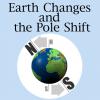

| Visitors Now: | |
| Total Visits: | |
| Total Stories: |
Surging Magma Worldwide
While magma on the move often appears as low frequency waveforms (harmonic tremors) on live seismographs following severe quakes, large-scale flow-induced oscillations (surging magma) is characterized by higher frequency and more irregular waveforms.
Harmonic Tremors
Surging Magma
Earth's increasingly roiling core in response to the approach of Planet X has been evident in many ways, yet none perhaps more telling than the global incidence of surging magma that occurred on May 25, 2013. Registering on the vast majority of GSN seismographs, this unprecedented global sloshing of magma was present more than 24 hours after any reported severe quake activity.
Clearly, the Earth wobble has entered a new threshold of severity as the below heliplots attest.
“The influences on the Earth are many, with just what point when a global shudder occurs caused by many factors and occurring at many points in the day… Earth and Planet X are in a dance with each other, with Venus and the Dark Twin on occasion bumping into this couple on the dance floor. The Earth at this time is trying to lean its N Pole away from the N Pole of Planet X, but daily this lean, which is not normal for the Earth as it normally aligns with the Sun, will bounce back. This violent daily wobble is now being noted by many who find the Sun out of place. On occasion, the Earth will attempt to placate the dominant magnetic field of Planet X by lying in opposition, actually pointing its N Pole toward the Sun. Any time this activity involves a strong enough lurch that the magma begins to slosh, a global shudder will emerge.”
================================================================================
Source: http://poleshift.ning.com/xn/detail/3863141:BlogPost:937034



